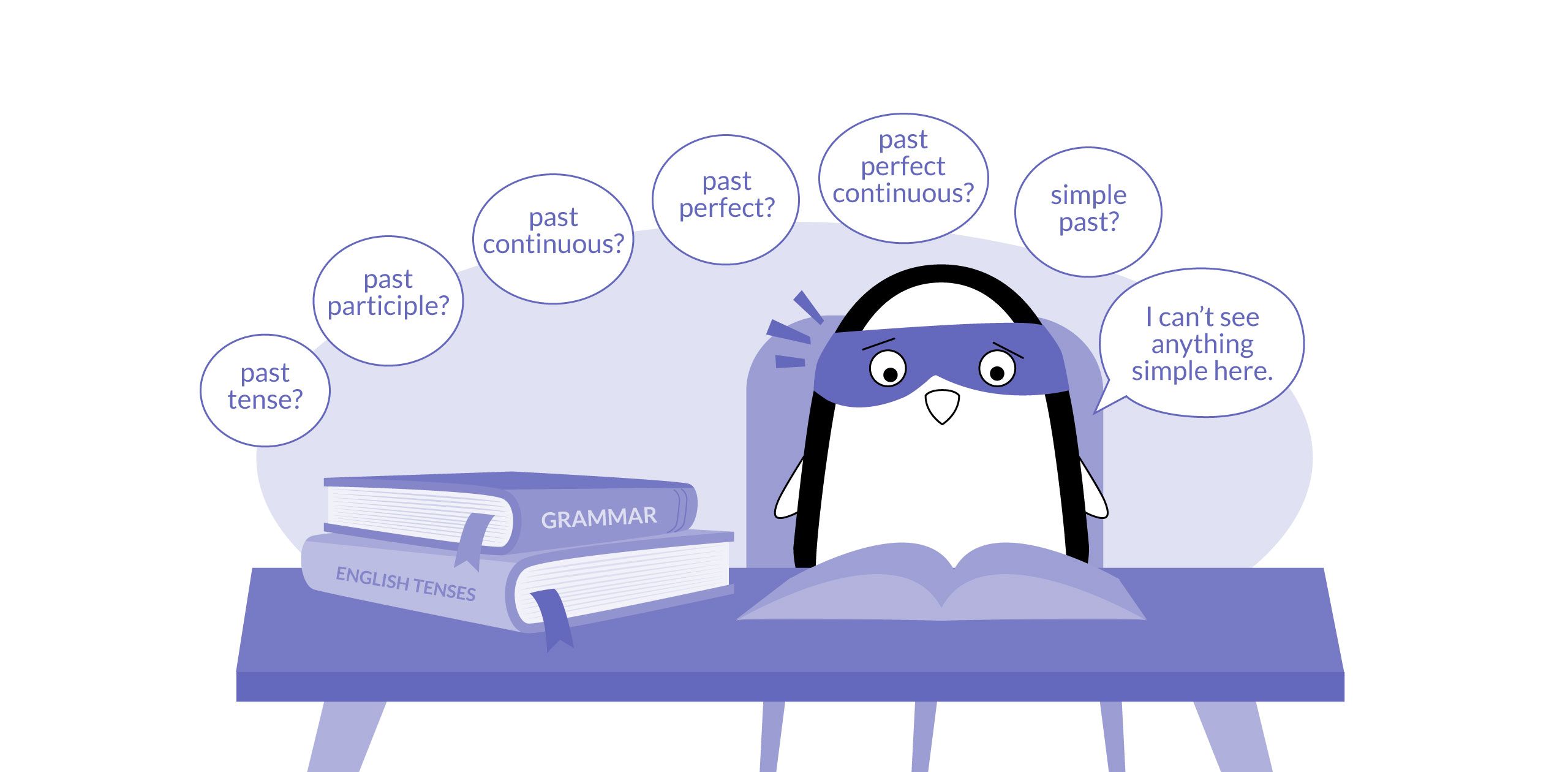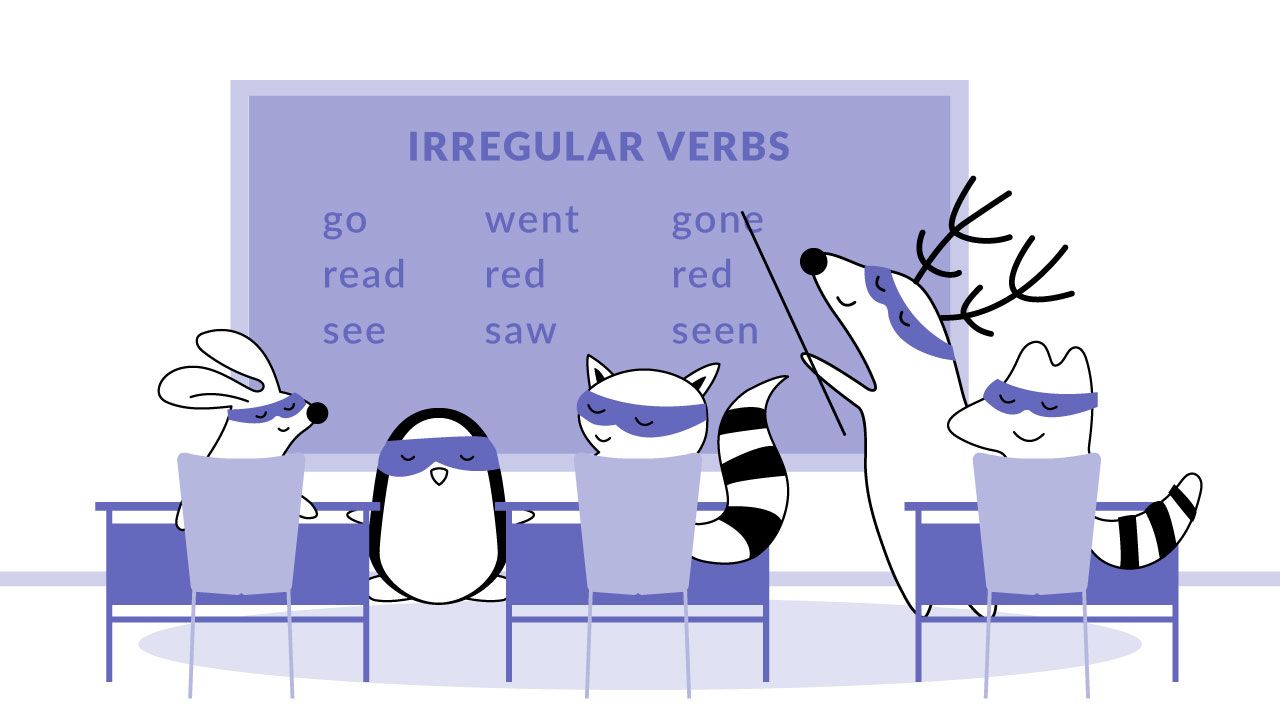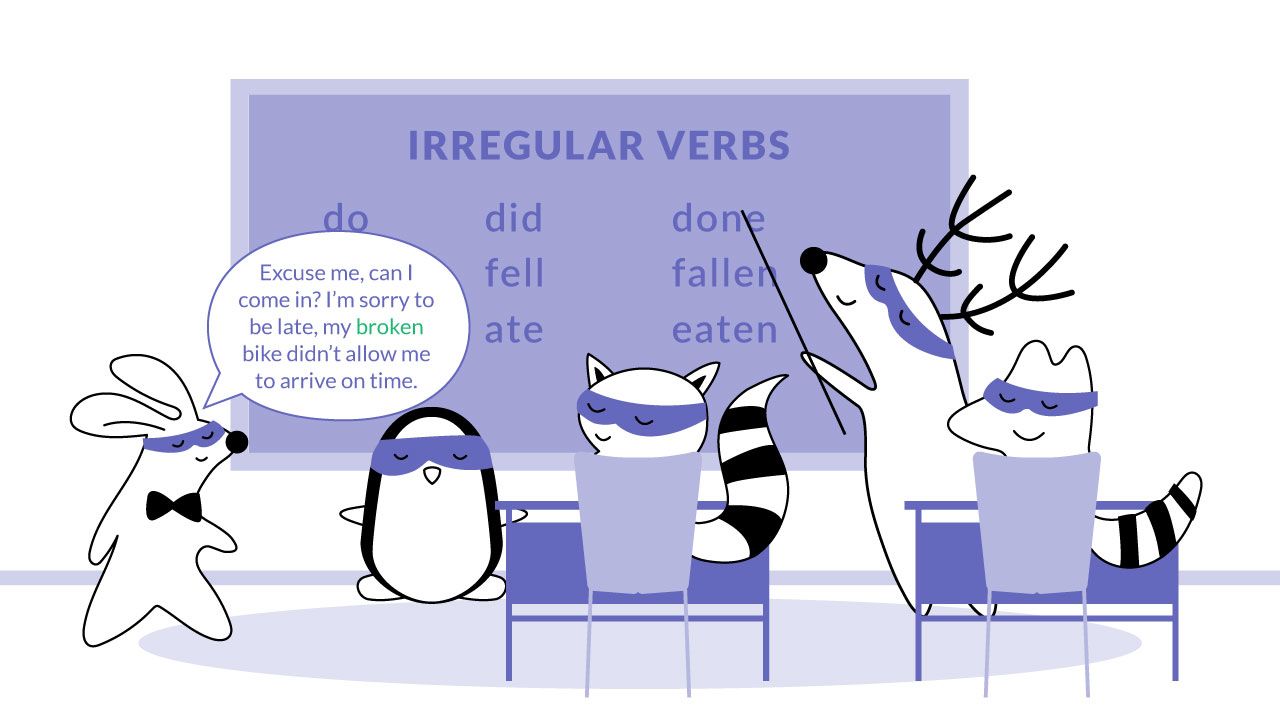
The concept of time in the English language may seem a bit confusing and even intimidating at first glance, especially for beginning English learners. After all, apart from familiar past, present, and future tenses, English has several forms of each tense, which, in turn, require the speaker to know more grammar rules to use them correctly.
In addition, different past tense forms make the speaker use different verb forms, which also might get tricky, considering that there are different types of English verbs - regular verbs and irregular verbs. But don't get discouraged just yet - once you'll get through each of them, you will get a better understanding of their usage and will be able to put it into practice.
Let's dive in!
Learn English with Langster
Brief Introduction to Past Tenses
As you probably already know, there are three tenses in the English language - past tense, present tense, and future tense. We use them to describe the time when a particular action happened. Depending on the tense you use, you will need to modify or conjugate the verbs in the sentence to fit the tense.
These tenses are, in turn, divided into further sub-forms. For the sub-forms of the English past tense, these include simple past, past continuous, past perfect, and past perfect continuous, which are used to describe things that happened at a specific time in the past. Let's have a closer look at each of them:
Simple Past Tense
This is the first form of past tense that English students usually come across when studying grammar. It refers to an action that happened and was completed, both a long time ago or in the recent past.
In other words, we use the simple past tense when talking about things that happened at one point in time and which we don't consider to be currently happening. Apart from talking about a completed action in the past, other uses of the simple past tense include talking about a series of completed actions in the past, as well as duration or habits in the past.
Simple past tense (also known as past simple, past indefinite, or preterite) is formed by placing a verb in its past form. Now, it's time to explain the difference between regular and irregular verbs.
Regular vs. Irregular Verbs
Regular English verbs follow the same rule every time you use them in past tenses. They create the past simple and the past participle forms by adding the same ending ed. Here is an illustrative example of using regular verbs in their past forms:
| Infinitive | Past Simple | Past Participle |
|---|---|---|
| talk | talked | talked |
| decide | decided | decided |
| imagine | imagined | imagined |
| Infinitive | Past Simple | Past Participle |
|---|---|---|
| talk | talked | talked |
| decide | decided | decided |
| imagine | imagined | imagined |
Irregular English verbs have different endings in both past simple and past participle forms, which you will need to memorize. The most common irregular verbs include go, take, make, say, know, and there are about 200 of them overall. Here are a few examples of irregular verbs in their past forms:
| Infinitive | Past Simple | Past Participle |
|---|---|---|
| be | was/were | been |
| go | went | gone |
| see | saw | seen |
| Infinitive | Past Simple | Past Participle |
|---|---|---|
| be | was/were | been |
| go | went | gone |
| see | saw | seen |

So, when using the simple past tense, you will need to either use the formula regular verb + ed or use the past form of an irregular verb. Questions are made with placing auxiliary verb did in the beginning, and negative sentences are constructed with did not.
| Present Simple (regular verb) | Past Simple (regular verb) |
|---|---|
| I work today. | I worked yesterday. |
| Do you work today? | Did you work yesterday? |
| He does not work today. | He did not work yesterday. |
| Present Simple (regular verb) | Past Simple (regular verb) |
|---|---|
| I work today. | I worked yesterday. |
| Do you work today? | Did you work yesterday? |
| He does not work today. | He did not work yesterday. |
| Present Simple (irregular verb) | Past Simple (irregular verb) |
|---|---|
| I go to school every day. | I went to school yesterday. |
| Do you go to school every day? | Did you go to school yesterday? |
| He does not go to school every day. | He did not go to school yesterday. |
| Present Simple (irregular verb) | Past Simple (irregular verb) |
|---|---|
| I go to school every day. | I went to school yesterday. |
| Do you go to school every day? | Did you go to school yesterday? |
| He does not go to school every day. | He did not go to school yesterday. |
Past Continuous
The past continuous tense is used to talk about things that were happening at a specified time in the past - in other words, things that were in progress. This form is generally used for describing ongoing actions you were doing or situations you were in at the moment when something else happened (i.e., interrupted this action).
In order to use the past continuous tense, you need to combine the auxiliary verb was/were + verb +ing (the present participle). Questions are formed by switching the subject and was/were. Negatives are made by adding not. Here are the examples:
- At 5 o'clock, I was drinking tea.
- Was she leaving for school at 7:30am?.
- The kids were not laughing as I spoke.
Note: While in the simple past tense a specific time is given to show when the action has started or finished (e.g. I walked the dog at 7 o’clock), in the past continuous it indicates an interrupted action (e.g. I was walking the dog at 7 o’clock when I saw the getaway car).
Past Perfect
The past perfect tense is used to describe an action that was completed in the past before another action happened. It's usually used to describe your previous actions or situations which caused or influenced the second action. Think of it as a simple relation between two events, cause and effect.
In order to form it, you need to use the auxiliary verb had + past participle form. Questions are indicated by inverting the subject and had. Negatives are made with not.
| Present Simple (regular verb) | Past Perfect (regular verb) |
|---|---|
| I never add sugar to my homemade cookies. | Before I noticed, my mother had added two cups of sugar to my cookie dough. |
| Do you add sugar to your homemade cookies? | Had you added sugar to my cookie dough before I noticed? |
| She does not add sugar to her homemade cookies, as well. | He had not attended our meeting, so we discussed everything without him. |
| Present Simple (regular verb) | Past Perfect (regular verb) |
|---|---|
| I never add sugar to my homemade cookies. | Before I noticed, my mother had added two cups of sugar to my cookie dough. |
| Do you add sugar to your homemade cookies? | Had you added sugar to my cookie dough before I noticed? |
| She does not add sugar to her homemade cookies, as well. | He had not attended our meeting, so we discussed everything without him. |
| Present Simple (irregular verb) | Past Perfect (irregular verb) |
|---|---|
| I make my coffee with milk every morning. | I had made my morning coffee before I realized there was no milk. |
| Do you make your coffee with milk? | Had you read the play before you went to the theater to see it? |
| He does not make his coffee with milk. | I had not read the play before I went to the theater to see it. |
| Present Simple (irregular verb) | Past Perfect (irregular verb) |
|---|---|
| I make my coffee with milk every morning. | I had made my morning coffee before I realized there was no milk. |
| Do you make your coffee with milk? | Had you read the play before you went to the theater to see it? |
| He does not make his coffee with milk. | I had not read the play before I went to the theater to see it. |

Past Perfect Continuous
The past perfect continuous tense (also called past perfect progressive) is used when you're describing an action that wasn't finished until another action in the past started. It's also used to describe a duration of time in the past, focusing on an action that took place before another one started.
In order to form it, you need to use the auxiliary verb had + been + verb +ing (the present participle). Questions are indicated by inverting the subject and had. Negatives are made with not.
- I had been working for this company for two years when I received my first promotion.
- By the time we finished our meal, we had been sitting around the table for five hours.
- Sorry for waking you. How long had you been sleeping before I came in?
- I had not seen that side of Carly before today.
Note: Using the past perfect continuous before another action in the past is an excellent way to show cause and effect.
Past Tense vs. Past Participle
Now that you know about all past tense forms, let's learn about what past tense is to figure out the difference between it and the past participle.
If simply put, past tense is a tense we use to refer to the past - whether it’s an action that has happened or a state that previously existed.
Now, What Is the Past Participle Exactly?
Participles themselves look a lot like verbs but are considered another part of speech and cannot be used on their own. There are also different types of participles, namely present participle, past participle, and perfect participle. Below, we will discuss past participles in detail, as they tend to be the most confusing.
In grammar, a past participle is a form of a verb used to create perfect tenses, such as present perfect, present perfect continuous, future perfect, future perfect continuous, and two more mentioned above.
For most verbs, the past participle is usually the same as the past form, meaning these are verb forms with ending ed. However, there are also irregular past participles that vary from one irregular verb to another. You’ve seen tables illustrating both cases above.
In addition to forming the perfect aspect (perfect forms), the past participles can be used in a passive voice, and many of them can act as an adjective used to modify nouns. Here are some examples:
- His broken bicycle didn't allow him to arrive on time. [adjective]
- She was manipulated by targeted ads to make that purchase. [passive voice]
- I have a colored notebook on my desk. [adjective]

Also, in written English, you can frequently find participle phrases - longer adjectival phrases that use a past participle and other parts of speech to explain an action. These are participle phrases used in the following sentences:
- Driven by her ambition, she worked 14 hours a day.
- Exhausted from tidying up the house, she fell on the bed.
- Disgusted by the taste of homemade curry, he ordered Indian food delivery.
So, What's the Difference?
As you can see now, the difference between the two is that the past tense is a tense expressing action that happened in the past, while the past participle is a grammatical unit used to create different forms of such tenses. Simply put, if you think of past tense as a Lego set, the past participle would be a single Lego piece.
It is important to remember that past participle is not a tense and should be used with auxiliary verbs unless it's an adjective.
The Bottom Line
Hopefully, our brief guide helped you get more familiar with the concepts of past tenses and past participles, along with how they are used. Applying this knowledge into practice will help you gain more confidence in talking about previous events and advance your writing skills.

If you're interested in learning how to use English grammar correctly on a daily basis, download our Langster app. It is full of short and engaging stories with audio from native speakers and grammar explanations at your fingertips. Good luck!









